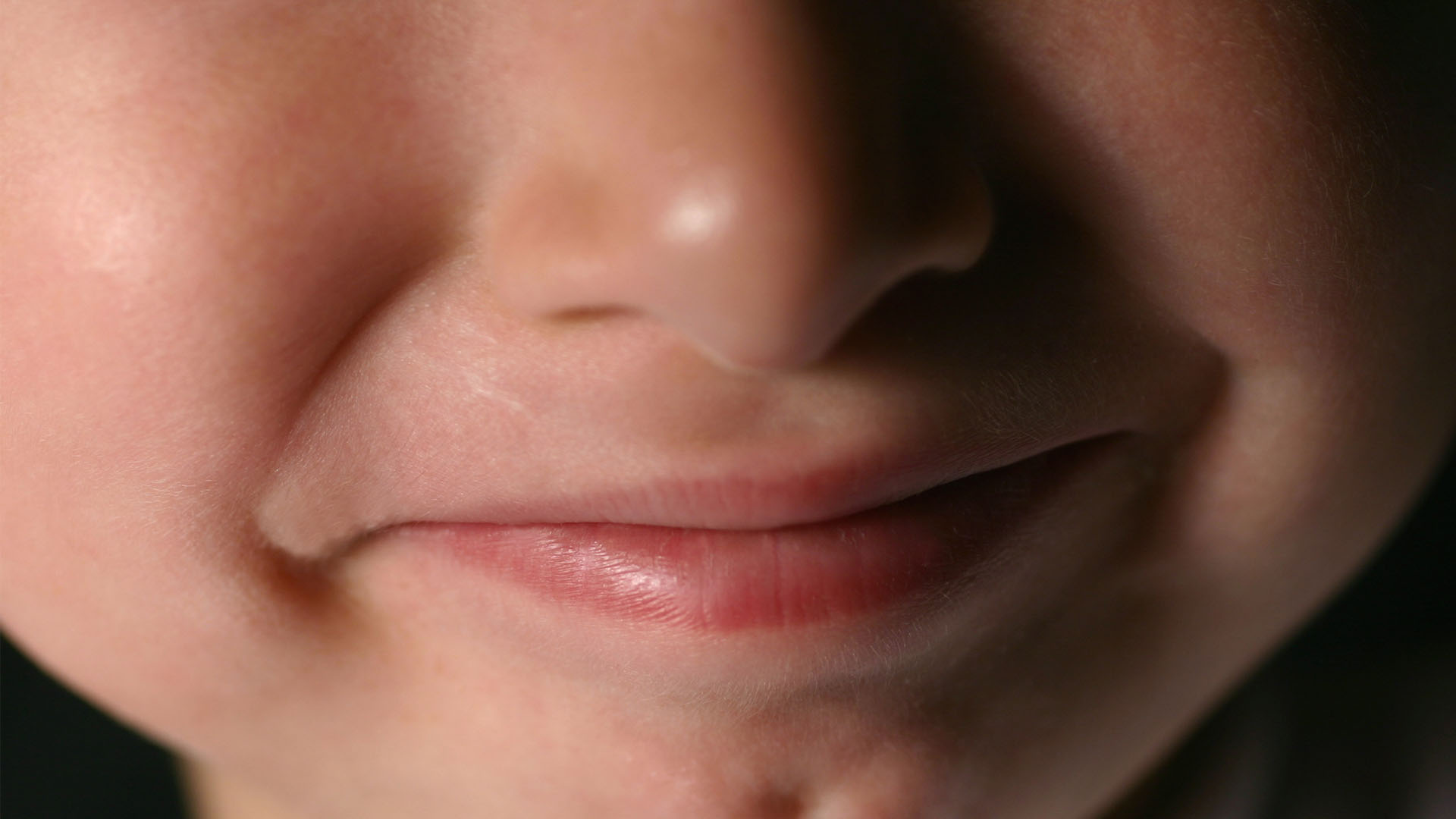What causes dimples?
About 20 percent of people have dimples. But what causes them?

In some cultures, dimples are seen as a sign of beauty or even good luck. But what causes dimples, and why do some people have them while others don't?
Dimples are small, natural indentations in the skin. Around 1 in 5 people have dimples, according to a 2019 meta-analysis in The Journal of Craniofacial Surgery. They are commonly found on the cheeks but can be located on other parts of the body, such as the chin and lower back.
Live Science looked at how these indentations form and whether they can disappear over time.
How dimples are formed
Cheek dimples are formed by an anatomical variation of a facial muscle called the zygomaticus major (ZMj), according to the 2019 meta-analysis in The Journal of Craniofacial Surgery. The ZMj draws the mouth up and down, creating facial expressions of pleasure or pain and everything in between.
In people with dimples, however, the zygomaticus major divides into two groups of muscle — one above the corner of the mouth and the other below. This is called a double or bifid ZMj. When the skin moves over the two muscle groups, it forms an indentation, otherwise known as a dimple.
Dimples are passed on genetically, though how is not completely clear. According to a 2015 review in the Innovative Journal of Medical and Health Science, people with one dimpled parent have a 25% to 50% chance of having the indentations, while people with two dimpled parents have a 50% to 100% chance.
"The issue of genetics in dimples has been poorly researched to date, with very little work done in the field," Ross Elledge, a consultant oral and maxillofacial surgeon in the U.K, told Live Science over email. "The overriding theory is that the inheritance is autosomal dominant — only one of a pair of genes is required to code for the presentation of dimples and that this gene can be inherited from the mother or father.”

Ross Elledge is a consultant oral and maxillofacial surgeon and honorary senior clinical lecturer in the U.K., with private clinics spanning Birmingham, Solihull and London. He also holds an honorary consultant in oral and maxillofacial surgery contract with Sandwell and West Birmingham Hospitals NHS Trust.
According to MedlinePlus, by the National Library of Medicine, little research has been done to explore the genetics of dimples and it is not known which gene or genes may be involved.
Although many people born with dimples have them for life, some people are born with dimples that disappear as they grow older, according to the Genetic Science Learning Center. Others develop dimples later in childhood.
One explanation for some dimples' transience could be fatty deposits in the cheeks during childhood, according to the 2015 review mentioned earlier. People lose fat in this area as they age, and the facial muscles stretch and lengthen, causing dimples to disappear.
"Fat in the area may remodel over time which may make dimples appear more, or less, apparent as the face ages and remodels," said Elledge. "Hence some people will 'lose' their dimples as they age, while in others, they may become more pronounced."
Where can you get dimples?
Cheek dimples can form on one or both cheeks, but single dimples are rare, according to the 2015 review. They can vary in depth and size, and they usually sit to the side of the mouth, appearing deeper when people smile or laugh.
Dimples can form on parts of the body other than the cheeks, with some types being more common than others.
Sometimes known as a cleft chin, chin dimples aren't formed the same way those fleeting cheek divots are. Instead, they are Y-shaped indentations that occur when the right and left sides of the jawbone or jaw muscle don't fuse entirely during development in the womb. Just like cheek dimples, these permanent facial features are thought to be genetically inherited from one or both parents.

Back dimples, also known as ‘dimples of Venus’ form in a similar way to cheek dimples, when a short ligament stretches from part of the hip bone to the skin on the back. This pulls the skin in, creating a dimple. Back dimples are usually situated on the lower back, just above the buttocks. Like other skin dimples, back dimples are thought to be genetic, but there simply isn’t enough research to be conclusive on the subject.
So is someone more likely to have dimples elsewhere on the body if they have cheek dimples? "There is no clear genetic or anatomical basis for dimples in other areas of the body to naturally follow on from dimples on the cheeks," Elledge said. "As such, having cheek dimples does not make you more or less likely to have dimples anywhere else on your body."
Get the world’s most fascinating discoveries delivered straight to your inbox.
Joanne Lewsley is a UK-based freelance writer and editor, covering health and lifestyle news and features. She mainly creates evidence-based health and parenting content and has worked with a number of global sites, including BabyCentre UK, Medical News Today, Fit & Well, Top Ten Reviews, and Yahoo!

